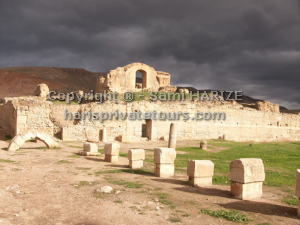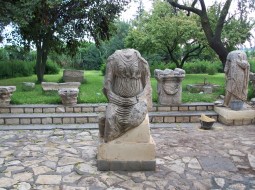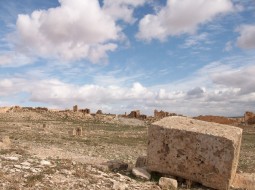Tunisia
From the earliest times, Tunisia had a rich prehistory with many facets, as revealed by the results of extensive archaeological finds over many years. From the Mousterian Paleolithic period with the remains of the Capsian culture, Tunisian prehistory is illustrated by several types of evidence.
There are flint arrowheads.
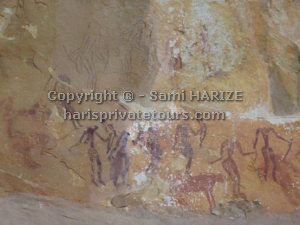
Rock carvings showing hunting scenes with artistic flair
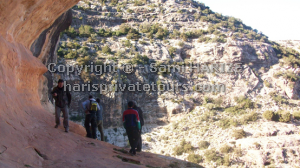
The prehistoric cave of the same place
.
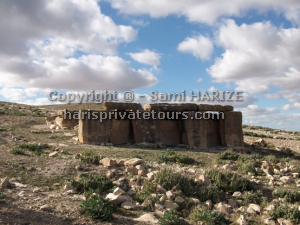
Megalitic grave of Ellès, North-West of Tunisia
The visitor will then be able to admire, not far from Hammamet, these burial vaults called “Haouanet”, kind of plane-parallel funeral rooms dug in the side of the mountains, in Sidi Latreche as example.

The Haouanet of Sidi Latreche not far from Hammamet
Later, the Berber civilization arises. These were the first inhabitants of the whole of northern Africa. Up until today, their traces have not been erased from the collective subconscious of the people. A fully fledged civilization, but also a culture of great refinement. It gives birth to kingdoms such as the Numidians, the Maessyles, and the Gétules.
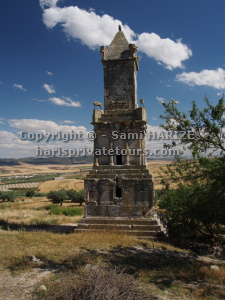
Lybico Punic mausoleum in Dougga dated to the III.th century B.C
From their habitations remain now some troglodyt villages. These houses, built in the top of the mountains, allowed their habitants to ensure their security against the raids.
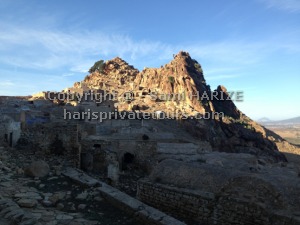
Berber village of the Zriba
After this first flowering of civilization, the first outside inhabitants arrived. They were the famous Phoenician traders and shrewd navigators. By crossing the Mediterranean, they end up landing at Utica, their first colony in Tunisia. This ancient Phoenician city-centre founded in 1101 BC signified the beginning of great epic in Tunisia, a history which started early with the sea faring Phoenicians, who invented the first alphabet of human history. While elsewhere people, like the early Romans, had not yet starting to write, Tunisia was already an established literate civilization.
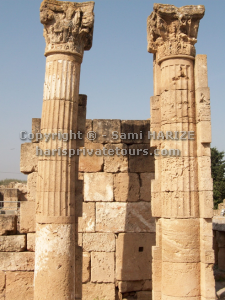
Roman capitals of the Utique city, founded in 1101 by the Phenicians
Then it was the turn of Phoenician or as it was later called Punic Carthage. Having gained independence by force of circumstance from its mother city Tyre, she became the wealthy capital of a prosperous maritime empire. The Western Mediterranean was then centre of its commerce for several centuries. Superb and skilled, they colonized Spain. Countless remains of the ancient metropolis of Carthage are available for visitors who are eager to know about this fallen civilization, for it destruction was without doubt due to the presence of another emerging power on European side of the Mediterranean, Rome.
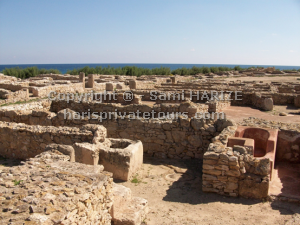
The punic site of Kerkouane in the Cap Bon peninsula
The Punic wars between Rome and Carthage were inevitable. They ultimately sealed the fate of the unhappy Carthage despite the efforts of Hannibal, whose historic military exploits were not sufficient to destroy his rival who ultimately claimed total control of the Mediterranean.
Unfortunate tragedy that was the fate of Punic Carthage, like its founding Queen Elyssa-Dido, as recounted in the epic poem of Virgil, whose beautiful love story was taken up by the greatest painters and orators of the Middle Ages. The archaeological discoveries in Carthage and Kerkouane stand out for visitors with visitor memorable remains of exceptional refinement: innovative urban planning, precious items such as finely crafted jewelry, or ancient sarcophagi carved in quality marble starkly recount their fallen splendor.
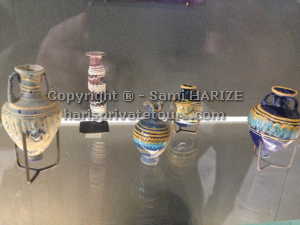
Punic objects collection in the Bardo National Museum, from the VII.th Century B.C
By annexing Carthage’s territory to the growing empire, Rome was eager for glory and military victories, irrespective of the contribution of the distinguished fallen culture upon which we rely heavily
But Carthage like the phoenix reborn, spread its wings again but this time more beautiful than ever: impressive public baths, deadly amphitheatres, theatres to ensure the continuance of culture, villas with rich decorations and paved with beautiful mosaics recalling myths of former times.
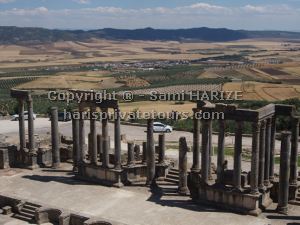
The roman theater of Dougga
The gods were parading to the delight of their wealthy sponsors, while the lives of their ancestors are meticulously reproduced.

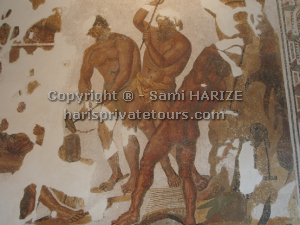
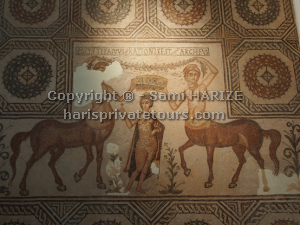

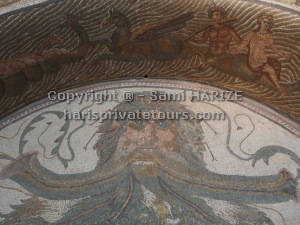
Roman mosaics currently exposed in the Bardo National Museum
But there is no pause in this continuous story because Christians are already present. They mark their presence by basilicas scattered throughout the land and also by the early Christian mosaics on display in many museums. We learn through these exhibits that Tunisia was pagan territory, then Christian, before falling to the Muslim Arabs who also came as conquerors.

Christian basilica and mausoleum of Carthage
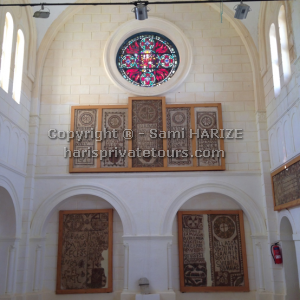
Paleochristian museum of Enfidha
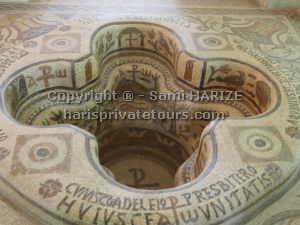
The famous baptistery of Kelibia exposed in the Bardo National Museum
Despite fortifying their newly occupied towns, the Byzantines eventually succumbed to the repeated incursions of the Muslim Arabs, colonizers of a new kind. Or perhaps not so new, if one remembers that the Phoenicians were Semitic peoples before being Romanized.
In 669 Kairouan was founded followed by Tunis in 698.
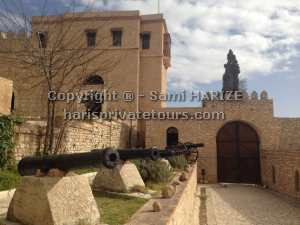
The Great Kasbah of Kef in the North-West

The mosque of Sidi Okba in Kairouan dated to 669
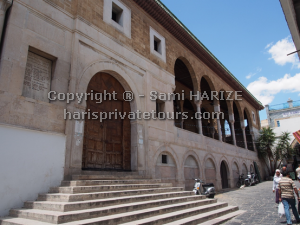
The Great mosque in the heart of the Medina of Tunis founded on 698
Following this there were multiple dynasties: Aghlabids, Fatimids, Zirids, Hafsides and to top this diversity, the Ottoman Turks settled there for a long time before being ousted by an ambitious France.
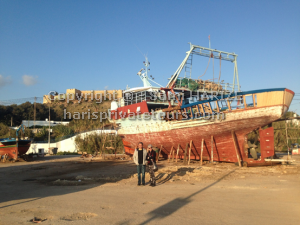
The hispano-turkish fortification of Kelibia in the Cap Bon peninsula
Meanwhile, they are Andalusians and Italians in search of fertile lands.

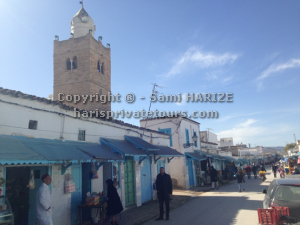
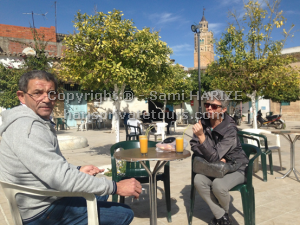
The Andalusian village of Testour on the road to the roman site of Dougga in the North-West of Tunisia
Had not it been loudly proclaimed that Tunisia acted as the granary of Rome? That Tunisia was recognised for its notable martyrs in Christian times? Did not she provide the Vatican with three Popes from Tunisia (the 14th Pope Saint Victor I, the 32nd Pope Miltiates and the 49th Pope Saint Gelasius I)? And there is also the great scholars of history and sociology and the interpretation of the Qur’an from Tunis?

Statute of the great sociologist Ibn Khaldun in the Habib Bourguiba Avenue
These giants of antiquity can be rediscovered from times past from the textbooks of our younger age, and memories of their mythical achievements have nurtured the dreams of our childhood.
This country of contrasts and beautiful scenery does not need to use advertising slogans to clinch your interest. The dialogue and interchange between civilizations in a tumultuous Mediterranean is much echoed in the history of Tunisia, and this is particularly relevant today. The presentation of this dialogue and interchange between civilizations is integral to our understanding of the past, the present and the future
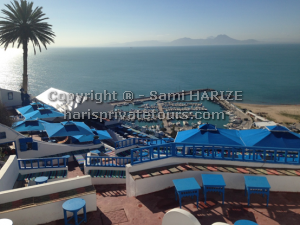
The Cafe des Delices in the village of Sidi Bou Saïd
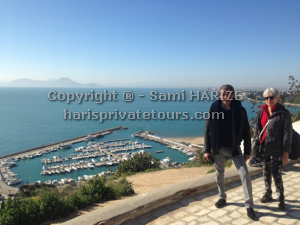
Panoramic view on the Golfe of Tunis from the hill of Sidi Bou Saïd
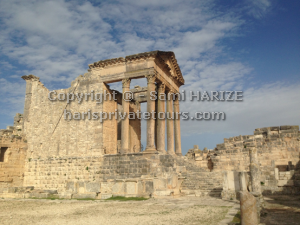
The famous capitol of the roman site of Dougga in the North-West
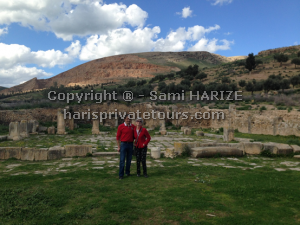
Noth West lanscape in Bulla Regia (with two VIP customers)
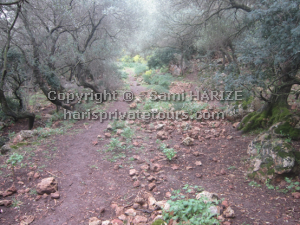
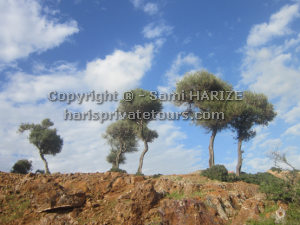
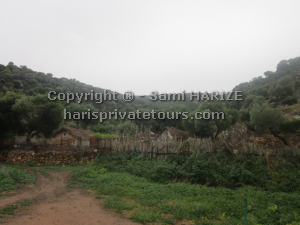
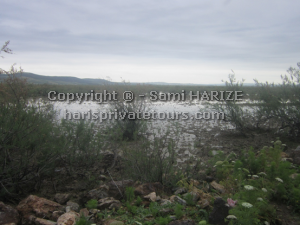
National Park of Ichkeul, referenced in the UNESCO

North West landscape of Tunisia in djebel Serdj not far from Siliana
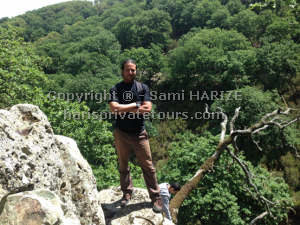
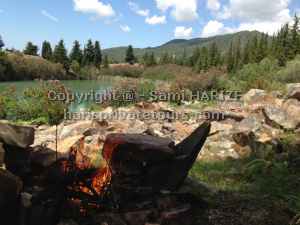
Ain Draham Park not far from Tabarka
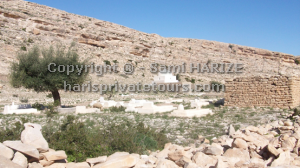

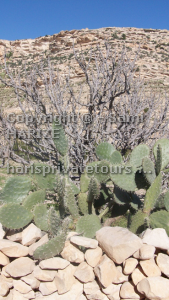
Landscapes of Tunisian steppes in the center of the Country
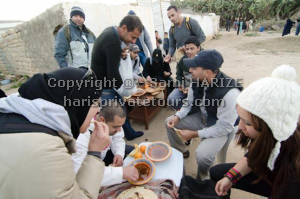
Tasting of land products (Sami Harize is the man with the cap)
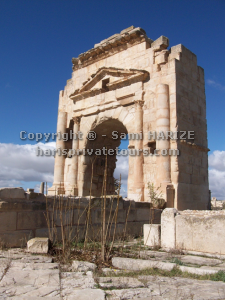
Triumphal Arch of Maktharis in the North West
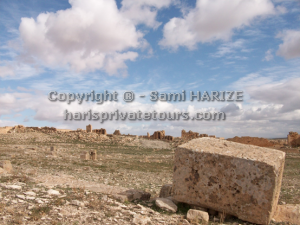
Rests of the Byzantine Fortification of Ammaedera (Haïdra) in the North West
